#agony in the garden
Explore tagged Tumblr posts
Text
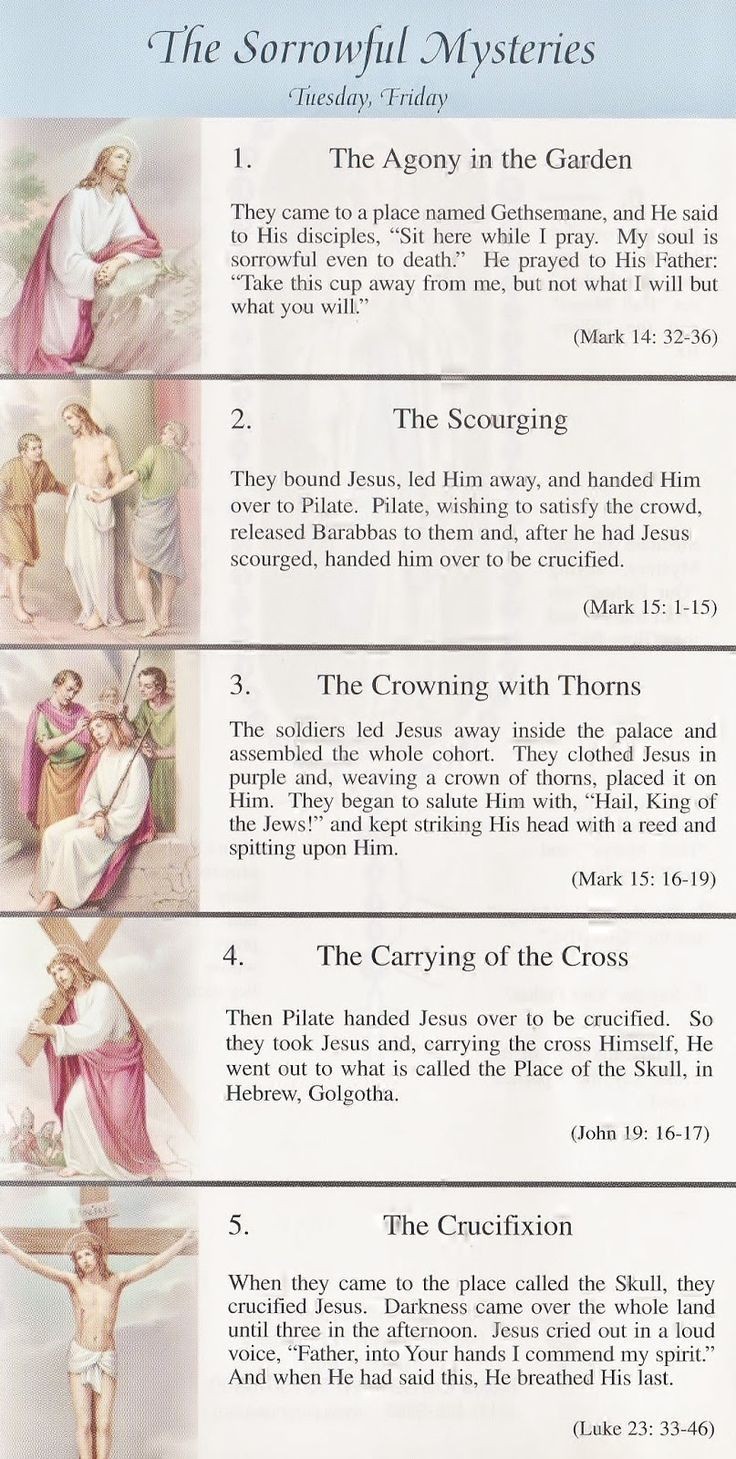
#catholicism#roman catholic#catholic#rosary#rosary mysteries#the sorrowful mysteries#agony in the garden#the crucifixion
115 notes
·
View notes
Text

Christ on the Mount of Olives
Artist: Arent de Gelder (Dutch, 1645-1727)
Date: ca. 1715
Medium: Oil on panel
Collection: The Leiden Collection, New York City, NY, United States
Description
Arent de Gelder’s painting captures the essence of a miraculous moment described in the Gospel of St. Luke 22:39–46, when an angel, descended from Heaven, comforts and supports Christ as he prays in a wooded grove at the Garden of Gethsemane near the Mount of Olives. The angel, dressed in radiant white robes, tenderly reaches toward the kneeling Savior, who prays with lowered head and raised hands. Simultaneously, and with a gesture that visually strengthens their bond, the angel’s extended wing wraps around and embraces Christ. The two figures glow in a pool of heavenly light, more spiritual than physical. It overwhelms the profound darkness of the evening, dimly illuminating the surrounding olive trees and three sleeping disciples huddled together in the immediate foreground.
Christ’s encounter with the angel occurred on Passover, shortly after the Last Supper when he had informed his disciples that one of them would betray him, and before Judas betrayed him in the Garden of Gethsemane. After the Passover feast, Jesus, as was his custom, went to the garden at the foot of the Mount of Olives with a few of his followers, whom the Gospel of St. Matthew identifies as Peter and the sons of Zebedee, James and John. When Christ arrived in the garden, according to the Gospel of St. Luke, he urged his disciples to “pray that you will not come into temptation.” He then moved “about a stone’s throw” away and prayed to God: “Father, if You are willing, remove this cup from Me; yet not my will, but Yours be done.” As in answer to his plea, an angel descended from Heaven to succor him in his agony. Luke relates that, even with the angel by his side, Christ’s suffering was so intense that “His sweat became like drops of blood, falling down upon the ground.” He then discovered that his disciples, exhausted from sorrow, had fallen asleep. In the Gospel of St. Matthew, Christ admonished Peter with these words: “So, you men could not keep watch with Me for one hour? Keep watching and praying, so that you do not come into temptation; the spirit is willing, but the flesh is weak.”
#painting#lndscape#evening#jesus#angel#biblical scene#mount of olives#biblical story#gospel of luke#olive trees#christ's disciples#sleeping#agony in the garden#oil on canvas#fine art#artwork#oil painting#dutch culture#dutch art#arent de gelder#dutch painter#european art#the leiden collection
12 notes
·
View notes
Text


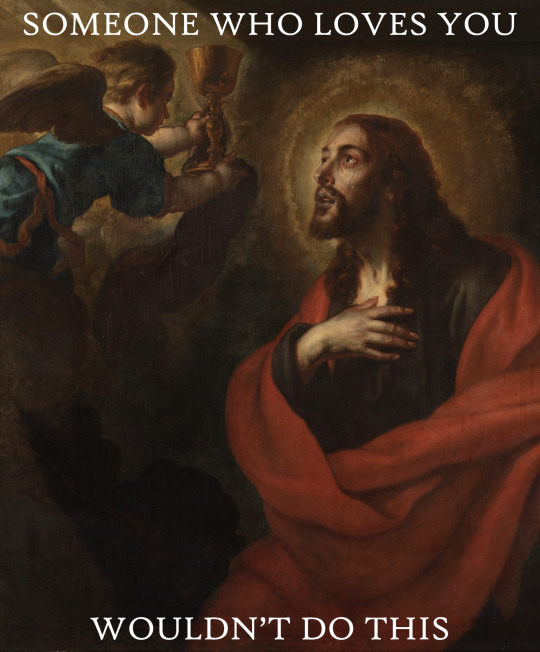


web-weaving – the agony in the garden
🩸 Christ in Gethsemane – Heinrich Hofmann // Rose – The Oh Hellos 🩸 Folio 122r of a Book of Hours – Masters of Zweder van Culemborg // Luke 22:42 🩸 Christ in the Garden of Olives – Gaspar de Crayer // Family Line – Conan Gray 🩸 Folio 122r of a Book of Hours – Masters of Zweder van Culemborg // Psalm 22:2 🩸 The Agony in the Garden – Ludovico Carracci // Sun Bleached Flies – Ethel Cain 🩸
#haha just working thru my religious trauma by making edits on the internet lmao#different than what i've done before but inspiration struck me#agony in the garden#gethsemane#jesus christ#heinrich hoffman#ludovico carracci#rose#rose the oh hellos#boreas#boreas ep#boreas the oh hellos#the oh hellos#family line#superache#conan gray#sun bleached flies#preacher's daughter#ethel cain#tw religious trauma#ex catholic#religious trauma#tw christianity#tw blood#tw death mention#art#art history#lyrics#lyric art#web weaving
119 notes
·
View notes
Text
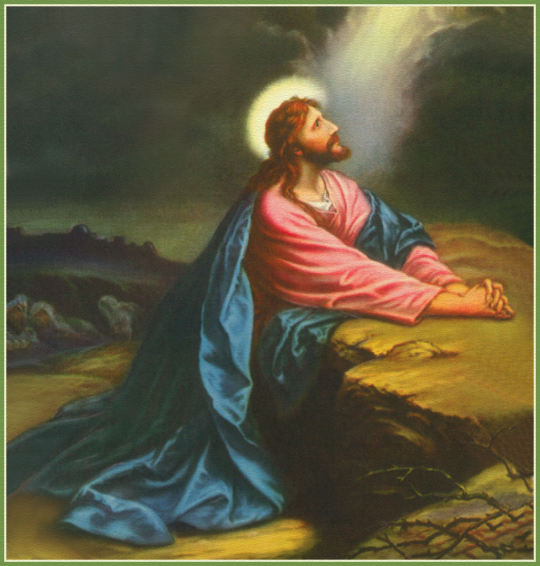
The Agony in the Garden HEINRICH HOFMANN 19TH CENTURY
49 notes
·
View notes
Text
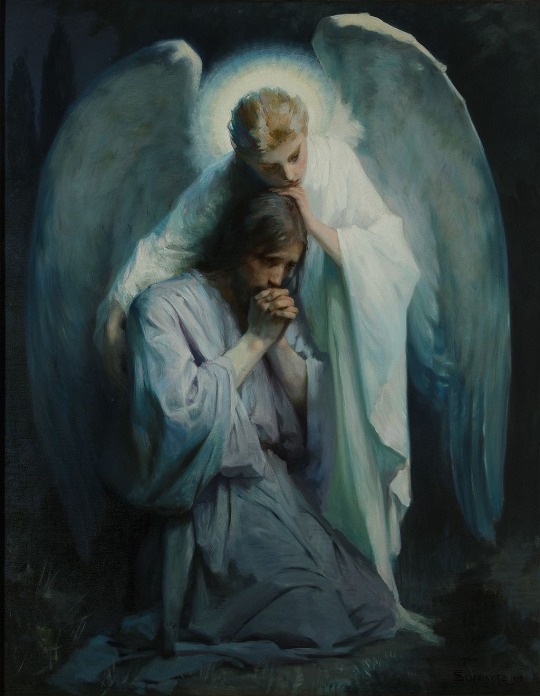
Agony in the Garden (1898) | Frans Schwartz
113 notes
·
View notes
Text

Agony in the Garden, Frans Schwartz, 1898
113 notes
·
View notes
Text

꧁★꧂
#the philippines#agony#agony in the garden#saints#angel#statue#christianity#catholiscism#weirdcore#flickr#oldweb#old web
60 notes
·
View notes
Text

agony in the garden
original painting by frans schwartz
#art by me#fanart#drawing#sketch#agony in the garden#aziraphale#crowley#ineffable husbands#good omens fanart#good omens#angel
24 notes
·
View notes
Text

#Jesus#Angel#Cross#Agony in the garden#Beautiful#Jesus loves you#Favorite#Christian Art#Catholic Art
28 notes
·
View notes
Text
Trials and Denials
Part 2 of The Passion of Jimbriel
Part 1: The Entry to Soho is here
The story of events leading up to the crucifixion of Jesus, and the days following, until his ascension to Heaven, are collectively known as the Passion narratives. It comes from the Latin "to suffer," or "to endure."
More than one op has mentioned there are parallels to this in S2, so I thought I would try and find how well the whole narrative was followed. Oh yes, is the short answer, it certainly does! And how! And in places you might be surprised about. I hope this series of metas might answer some of the odd mysteries of "why is that there...? that are still floating around at the moment for you.
In Part 1 we looked at the three temptations in the wilderness during the 40 days of fasting, before the entry to Jerusalem on donkey. Then there was the Cleansing of the Temple and the Anointing of Jesus.
Now we start to do some hard work. As a warning, we are going to be covering part of the Final Fifteen Minutes during this post, so if you don't want to read this at work, or somewhere else you don't have privacy to be upset, you might want to save or skip this for later.
I also mentioned at the end of Part 1 that it's not just Jim/Gabriel that takes on the role of Jesus, it's also Crowley - and they change around as we follow the narratives along. Crowley and Gabriel actually have a lot in common so it shouldn't be that much of a surprise.
The Last Supper is the next way point we need to cover in the narratives as we move along. It was at the Eldritch Ball, of course, with Jimbriel offering everyone "tiny little dinners" and just about everyone had a drink in their hand.
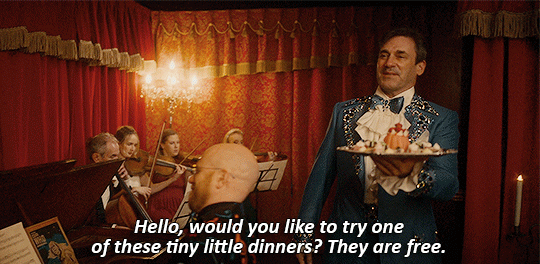
And he does share something he discovered about his body with the assembled crowd.

The Denial of Peter. After the meal, on the way to the Garden of Gethsemane, Jesus predicts that Peter, the first Apostle, would deny him three times before the cock crowed (or morning arrives.) In the narratives this happens in quick succession, but in S2 the three incidents are spread out.
But who plays who? Here's the prediction:
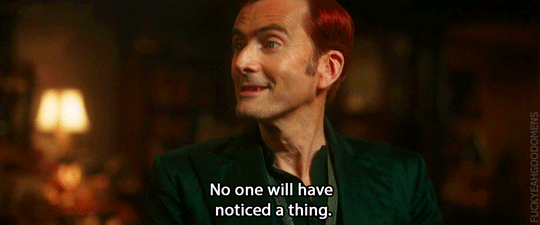
And here's Peter Michael, who's going to do the denying.

The Agony in the Garden of Gesthsemane is the next main part of the narratives. Here Jesus has retreated with three of the Apostles after the meal to pray and to ask to be released of his burden. But after pleading three times, he accepted he must take on the sins of men and die for them.
We have actually mentioned this one before - It is Crowley drinking the laudanum in the 1827 minisode. By drinking the laudanum in Elspeth's place he absolves her of her intended sin of taking her own life and took it upon himself - he saved her from going to Hell, so she could join wee Morag in Heaven, eventually (and paid the price in her place for it.) I covered it in my Altar of Eccles Cakes as it also covers being a Sin offering. It was first suggested here.
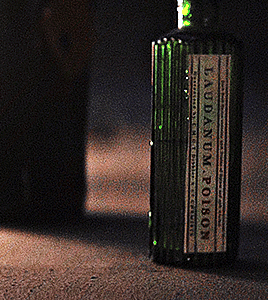
"If this cup cannot pass by, but I must drink it, Your will be done!" Matthew 26:42
An angel was said to have come from Heaven to comfort and strengthen him. Uh huh.

Jesus then comes back to find the three Apostles asleep. "The spirit is willing, but the flesh is weak."
I'm going to suggest these could be the three bodies we see in the 1827 minisode: the first is the body dressed in the mason's apron that Elspeth has dug up when Aziraphale and Crowley first come upon her, the second is the priest they dig up with wee Morag along, and the third is wee Morag's body. Why? Because I've been thinking about being shown the mason there in contrast to the priest (and the mention of masons in other parts of S2) and the brief discussion that is had about where one goes after one dies in that minisode. And the thing is, as Aziraphale tries to point out (and Crowley tries to argue with Aziraphale, as well) a lot of what you believe in while living doesn't matter once you die. Masons just have to believe in a supreme being (i.e. the Almighty) but they don't have the same belief structure as the Christian church. Both the mason and a catholic are going to end up in the same place (and wee Morag, too) despite that.
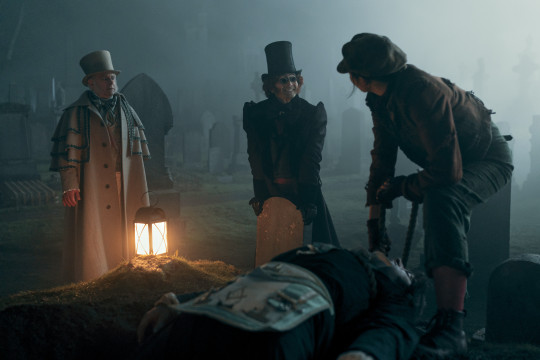
Now we've reach The Kiss of Judas, then The Arrest. But lets take a couple of steps back and set up the betrayal of Judas first - which starts around here:
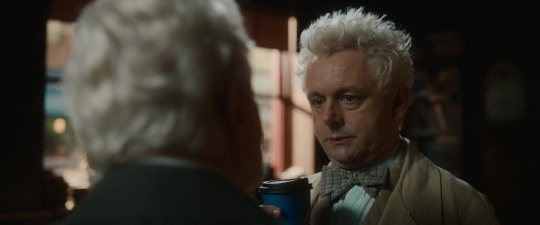
Hello there, Judas!Aziraphale. Aren't you going to accept my 30 pieces of silver bribe in the form of I'm-watching-what-you-do-almond-syrup-laden-coffee? Come and have a further chinwag with me while I bribe you with more silver in the form of the the Supreme Archangel's clothing and status! Meanwhile I'll just glare at this troublemaker of a Jesus!Crowley-echo-from-the-Great-War-in-the-past to remind him I haven't forgotten about him.

That's the Metatron, standing in for the High Priest of Israel, Caiaphas. We'll be seeing him again.
Oh. Yeah. The Kiss of Judas, to identify Jesus to the soldiers who came to arrest him.

You might notice it was kind of swapped around, though - Jesus was the active kisser in this instance.
So now we get to ask why. Why this. Why this ending. Because the relationship between Judas and Jesus is crucial to understanding what went on and what decisions were made. If the majority of us don't even understand that story we may have been told over and over again, how are we going to understand this one? No wonder we've been struggling with it.
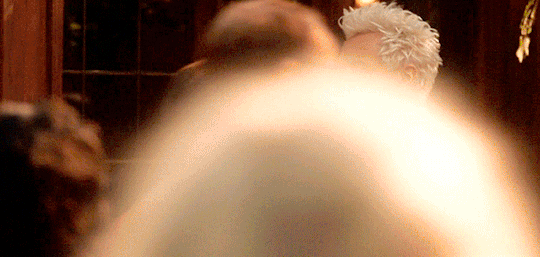
I realize I've got this far into this series of metas without really justifying why Crowley is standing in for Jesus. It started out being about Gabriel/Jim (we are still going to see more of Gabriel!) but understanding why...well, this is an echo from the past - part of the Great War of Heaven and the Fall being replayed in the present. Its a meandering mobius strip of a story line folding back over on itself and repeating. Perhaps I'll just point you back to this post for the time being while I'm still working on things (Its a long read, you might have to come back to it. But I'll cover a bit of it in the next part of the series.)
But back to Judas and Jesus, for context: Judas loved Jesus, but he was afraid for his people, the people of Israel (Heaven,) as well, and didn't want the might of Rome (Hell) to descend upon them. It would be far better to sacrifice just one person, Jesus, than many, so he agreed to the bribe and lead the soldiers to the arrest in the garden.
Jesus loved Judas just as much back, yet accepted the betrayal, and still called Judas his friend and loved him unconditionally. He had predicted he would be betrayed, and knew at the end of the hour in the Garden of Gethsemane that the hour had come. He had essentially asked Judas to kill him, then asked Judas to live with his guilt. (I think its expressed better in this short post. Very worth the read.)

Jesus was arrested, and taken away for trial.


The Trial Before the Sanhedrin
The Sanhedrin was a council of elders who who were appointed to act as a tribunal. Jesus was questioned before them but answered little, and they struggled to find witnesses to testify against him. Eventually they accused him of blasphemy and sent him to Pontius Pilate in the morning.
Here we have Gabriel being trialed before the Metatron/Caiaphas and the senior Archangels. Gabriel saying "Nah!" was blasphemy towards the Great Plan, and enough to get him removed.

The Three Denials of Peter Michael
No. 1...
URIEL: So the miracle was nothing to do with Gabriel's disappearance then? [in the back, Gabriel waves] AZIRAPHALE: Gabriel? Oh, you mentioned you're looking for Gabriel. MICHAEL: Did we? AZIRAPHALE: Yes. [Gabriel slams books together] AZIRAPHALE: Mm! GABRIEL: And see, the big ones can be used as fly swats. I know what you're thinking, but it's okay, because the beauty part is, it never works. ( fly buzzing ) MICHAEL: Don't I... Don't I know you? GABRIEL: Yes. You do. I'm the assistant bookseller. I opened the door for you.
...No. 2...
URIEL: The traitor? MURIEL: Yes. He seemed very... Traitorous. URIEL: Hmm... MURIEL: And his grumpy friend, Mr. Crowley. URIEL: The demon. MURIEL: Oh, I suppose that explains the grumpiness. Oh, and, of course, his... assistant? But I don't think I saw him. MICHAEL: His assistant? He doesn't have an assistant. MURIEL: No. Sorry, I don't know why I said that. MICHAEL: Does he? Does he? Didn't we meet a someone, something... about... [clears throat] books? URIEL: No, no. That's Aziraphale himself, he likes books.
...and No. 3.
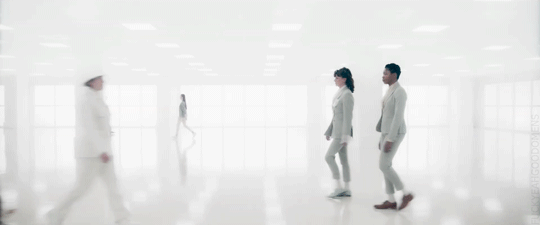
I was going to conclude the trial with Pontius Pilate in this part, but on reflection it may be better to include it in Part 3 - Resurrection
#good omens#good omens 2#good omens meta#good omens analysis#crowley#aziraphale#gabriel#the metatron#the passion of jimbriel#agony in the garden#kiss of judas#i'm watching you always watching#1827 crowley#the final fifteen minutes#its alright officer I'll come quietly#michael#do i know you?
34 notes
·
View notes
Text
"Only once in his life has Jesus asked for the help of men, and he does not receive it. These three, whom he has associated with every important step in his public life; whom he has made the partners of his secrets; who alone witnessed the raising of the daughter of Jairus and the Transfiguration; to whom he has but now given so touching a proof of his confidence by allowing them to see his human infirmity, these three forsake him. Not only do they fail to allay his grief; they do not even understand it. The whole drama is enacted between Jesus and heaven, indeed in the early stages between Jesus and Jesus himself, left by heaven to bear his own torment. Vainly he falls to the ground, rises again in quest of help, and once more falls prostrate; nowhere does he find repose, least of all among men."
-Fr. A.D. Sertillanges, OP, What Jesus Saw From the Cross
6 notes
·
View notes
Text
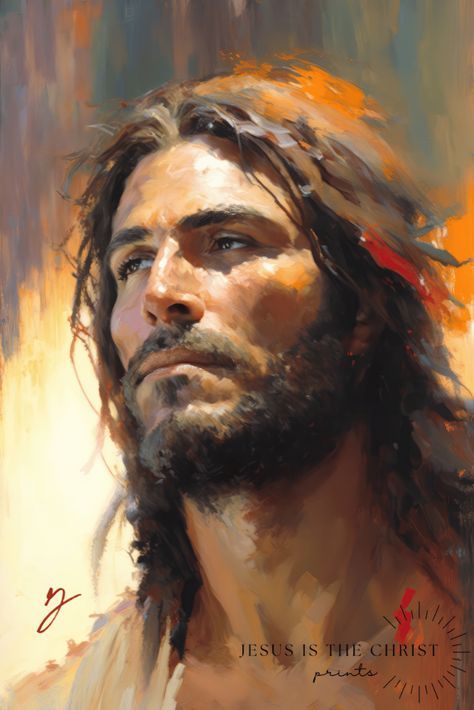
“His sweat became like drops of blood,” the Evangelist said. He sweated to heal Adam who was sick. ‘It is by the sweat of your brow.’ said God, ‘that you will eat your bread.’ He remained in prayer in this garden to bring Adam back into his own garden again.”
~St. Ephrem the Syrian
#Orthodox Christian#Christian art#Lord Jesus Christ#agony in the garden#healing of Adam#Garden of Eden#saints#St. Ephrem the Syrian#Jesus is the Anointed One
29 notes
·
View notes
Text

The Agony in the Garden
Artist: Doménikos Theotokópoulos (El Greco) (Greek, 1541-1614)
Date: c. 1608
Medium: Oil on Canvas
Collection: Szépmûvészeti Múzeum, Budapest, Hungary
The Agony in the Garden | Luke 22:44
There are many versions of The Agony in the Garden painted by El Greco and his workshop, it was one of his most successful inventions. He painted the subject both as a horizontal and as a vertical composition. The version in the Budapest museum is a good example of the vertical type. There are other vertical versions in Andújar, in Cuenca and in Buenos Aires. The intervention of El Greco's workshop can be assumed in all these paintings.
In his religious compositions and portraits El Greco frequently repeated themes from his major works, with slight alterations, to meet different commissions. He broke away from the Renaissance tradition and ceased to depict reality and nature. In order to convey mystic emotions and to imbue his work with passion he distorted and elongated the forms and used stridently blazing colours to express the transcendental. The Agony in the Garden is such mystic interpretation representative of El Greco's late years and mature style.
The painting depicts the last night of Christ on the Mount of Olives. In the foreground the tired pupils are sleeping, their unnaturally rigid robes refer to the wax models which the aged master used. Above them Christ is kneeling while an angel appears. The scene is a grassy clearing which looks like to be a lighted stage. In the background the soldiers are gathering.
#christian art#biblical passage#bible gospels#new testament#agony in the garden#garden of gethsemani#painting#oil on canvas#el greco#greek painter#early 17th century painting#european art#christianity#christian faith#jesus#jesus' discipples#angel#suffering#olive branch
10 notes
·
View notes
Text

7 notes
·
View notes
Text
"𝘠𝘰𝘶 𝘸𝘦𝘳𝘦 𝘢𝘭𝘸𝘢𝘺𝘴 𝘰𝘯 𝘔𝘺 𝘮𝘪𝘯𝘥..."
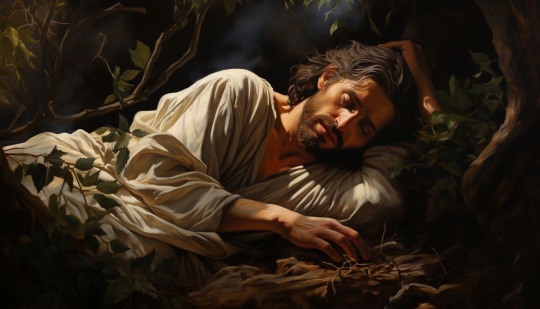
#jesus#catholic#my remnant army#jesus christ#virgin mary#faithoverfear#saints#jesusisgod#endtimes#artwork#Jesus is coming#Jesus speaks#come holy spirit#catholic church#agony in the garden
15 notes
·
View notes
Text
I was reading about today's spiritual work of mercy, comfort the afflicted, and it made me think of the agony in the garden, and how Jesus must've felt during that time in Gethsemane, and of the disciples who he asked to stay up with him (they couldn't but that's not my point). Sometimes comforting someone as they go through something bad or painful means simply being with them. Jesus' disciples couldn't take him away from his suffering, but they could be there for him, in the garden all the way to the cross. May we all find the strength and courage to stay up with something as they go to their gardens
53 notes
·
View notes